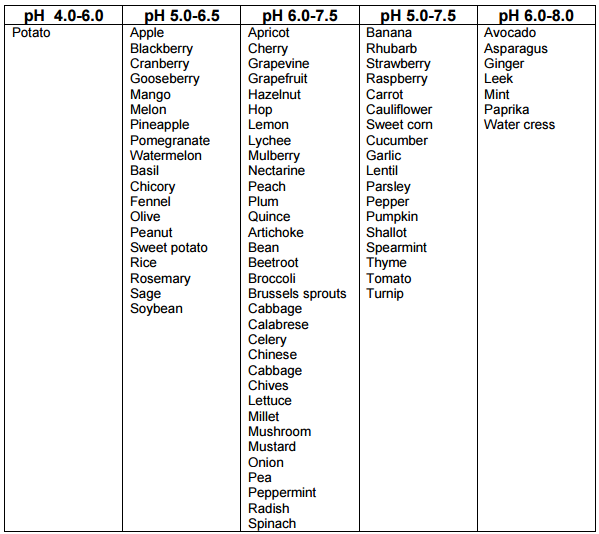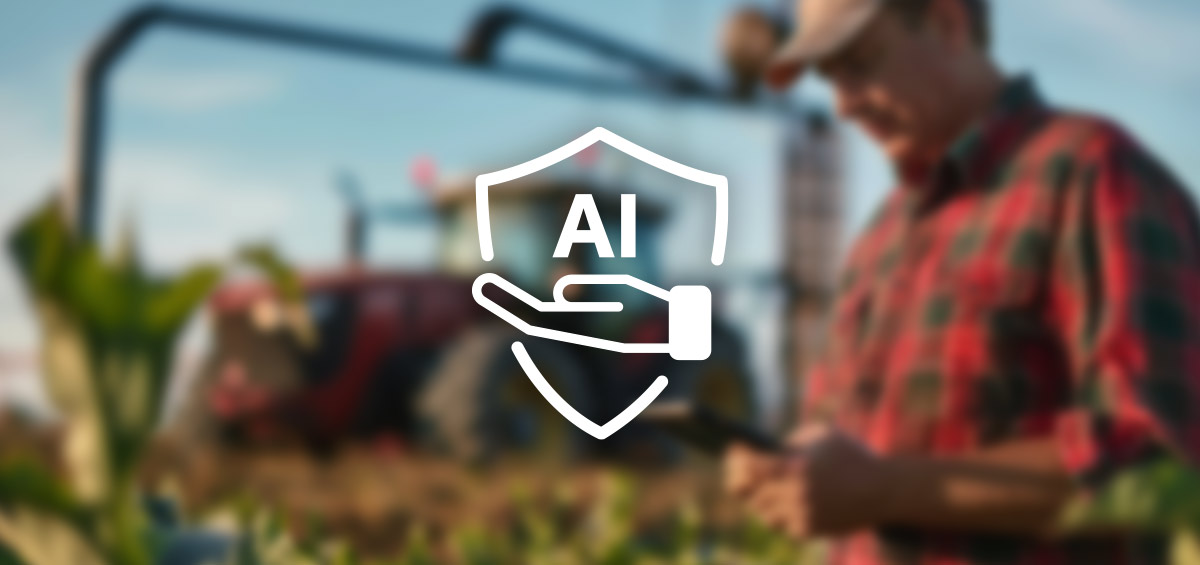

In very alkaline soils (increasing pH) phosphorus, nitrogen, iron, copper, zinc and boron are frequently deficient.
Factors affecting soil acidity
- Rainfall – soils formed under conditions of high annual rainfall are more acidic than are soils formed under more arid conditions
- Nitrogen fertilizers – the greater the nitrogen fertilization rate, the greater the soil acidification. Soil acidification is a result of intensive farming over a number of years with nitrogen fertilizers or manures.
- Plants – legumes like soybeans, alfalfa and clovers enchance soil acidification
pH range for farming of most common fruits and vegetables
Increasing soil pH
Soil pH is increased with liming, the addition of organic residues rich in basic cations and crop rotation. Correcting soil acidity by the use of lime is the foundation of a good soil fertility management program. Liming materials contain calcium and/or magnesium in the form of calcitic (CaCO3) or dolomitic lime (CaMg(CO3)2), which can be found in form of calcitic limestone, dolomitic limestone, oyster shells, marls, hydrated lime and basic slag.
Decreasing soil pH
Applying ammonium-based fertilizers, urea, sulfur/ferrous sulfate, irrigating with acidifying fertilizers, or using acidifying residues (acid moss, pine needles, sawdust) soil pH is decreased.
Accurate record-keeping of soil pH in AGRIVI system
The most accurate soil pH is provided by laboratory analysis of soil samplings. For each field farmer needs to know its pH level, to proper manage which crop to sow next. Tracking of soil pH is very important due to proper management of crop rotation. If a farmer has acid field, on which he has sown sweet potato, which prefered acid soil, another crop in crop rotation needs to prefer acid soil also. Othewise, farmer will need to raise soil pH level with liming, so the soil become optimum pH for growing of that crop.
This is where AGRIVI system helps farmers easily determine whether is a particular field suitable for growing of some crop, based on measured pH of that field. The optimum pH for all agriculture crops are entered into AGRIVI base, according to which the system indicates whether the measured pH on field is low, optimal or high for the crop which will be grown on a particular field. Overview of pH value per fields you can find in the Field analytics part. Intensive farming and the tendency to achieve higher yields lead to a higher and more frequent need for lime applications, to decrease soil pH.
Maintain optimal soil pH for each crop you grow and use pH analytics of AGRIVI farm management system.
Source: Crop Nutrition





